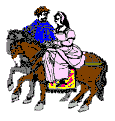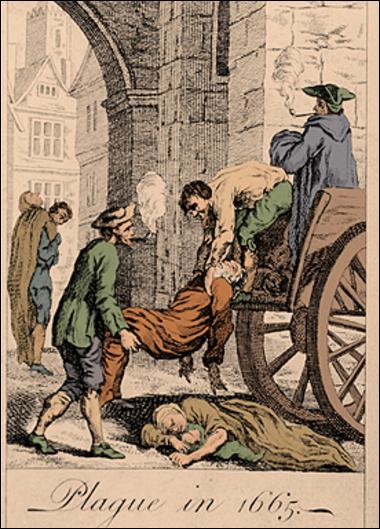Bubonic Plague, known as the Black Death, first hit the British Isles in 1348, killing nearly a third of the population. Although regular outbreaks of the plague had occurred since, the outbreak of 1665 was the worst case since 1348.
London – 1665

- 100,000 people – Dead!
- 40,000 dogs – destroyed!
- 200,000 cats – destroyed!

London had changed little since this engraving was made in 1480. Houses were tightly packed together and conditions insanitary – ideal conditions for the plague to spread, particularly during the hot summer of 1665.
Spring 1665
When plague broke out in Holland in 1663, Charles II stopped trading with the country in an attempt to prevent plague infested rats arriving in London. However, despite these precautions, plague broke out in the capital in the Spring of 1665. Spread by the blood-sucking fleas that lived on the black rat.

June 1665
The Summer of 1665 was one of the hottest summers recorded and the numbers dying from plague rose rapidly. People began to panic and the rich fled the capital. By June it was necessary to have a certificate of health in order to travel or enter another town or city and forgers made a fortune issuing counterfeit certificates.

July 1665
The temperature and the numbers of deaths continued to rise. The Lord Mayor of London, desperate to be seen to be doing something, heard rumours that it was the stray dogs and cats on the streets that were spreading the disease and ordered them to be destroyed. This action unwittingly caused the numbers of deaths to rise still further since there were no stray dogs and cats to kill the rats.

Bring out your dead!
Those houses that contained plague victims were marked with a red cross. People only ventured into the streets when absolutely necessary preferring the ‘safety’ of their own homes. Carts were driven through the streets at night. The driver’s call of ‘bring out yer dead’ was a cue for those with a death in the house to bring the body out and place it onto the cart. Bodies were then buried in mass graves.
November 1665
The numbers of deaths from the plague reached a peak in August and September of 1665. However, it was November and the onset of cold weather that brought a drastic reduction in the number of deaths. Charles II did not consider it safe to return to the capital until February 1666.
This article is part of our larger selection of posts about the Stuart Dynasty. To learn more, click here for our comprehensive guide to the Stuart Dynasty.
Cite This Article
"The Stuarts – Great Plague 1665" History on the Net© 2000-2024, Salem Media.
April 27, 2024 <https://www.historyonthenet.com/the-stuarts-great-plague-1665>
More Citation Information.






